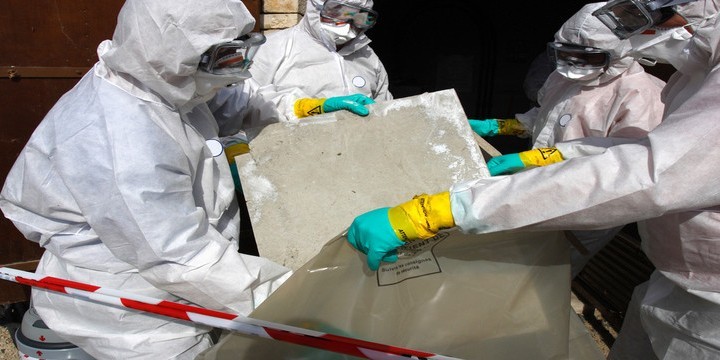Asbestos ca n be harmful, but like many harmful things only if it is handled incorrectly. Most people would not be overly concerned about asbestos contained in their home, and rightly so because if it is in good condition there is no need to worry. Most people would not even know if their house actually did contain asbestos or not.
n be harmful, but like many harmful things only if it is handled incorrectly. Most people would not be overly concerned about asbestos contained in their home, and rightly so because if it is in good condition there is no need to worry. Most people would not even know if their house actually did contain asbestos or not.
It’s a good idea to know if your home does contain asbestos, because you can then assess if there is any risk posed by it. For example you might find that the wall sheeting in your house was made from an asbestos containing product (found in older types of Fibro). You may find that some of the wall sheets are cracked, broken or deteriorating. If that is the case you might want to consider having those particular sheets replaced, because there could be some risk of fibres contained within the damaged fibro escaping into the atmosphere and that’s where it can pose some risk, albeit in most cases very minor risk. Undamaged, painted (or otherwise sealed) asbestos sheeting in good condition left undisturbed poses negligible risk if any at all.
There are National Codes of Practice that deal with the use, removal and disposal of asbestos containing products, and most states in Australia have legislation that requires people to abide by them although those codes generally relate to workplaces rather than domestic housing situations.
It is important to remember that the process of removing it can be risky in itself, and for that reason there is no legislated mandatory requirement to remove asbestos from homes that currently contain it. It makes more sense to leave it right where it is providing it’s regularly checked and maintained in good condition.
Some local councils make it a condition of approval for renovation or relocation projects that all asbestos be identified, removed and disposed off regardless of its condition or whether it is to be disturbed or not. Naive council polices like that place unnecessary costs on renovation projects and can make many homes simply not viable for relocation resulting in wasteful demolition, not to mention the unnecessary additional risk posed by removal and disposal of the asbestos itself.
Inappropriate council decisions can be reversed on appeal to a tribunal, but fortunately common sense generally prevails and most local councils around Australia do not require asbestos containing products to be removed during house renovation or relocation, unless it is disturbed in the process.
Links for further information below.
http://www.nsw.gov.au/fibro/faqs.asp
http://www.deir.qld.gov.au/workplace/subjects/asbestos/index.htm
http://www.renovationplanning.com.au/stories/Safe_asbestos_removal-0000000168.html

 recycling
recycling 